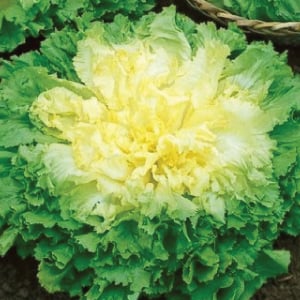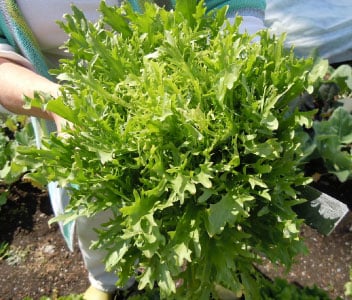
Learning Download: How to Grow Chicory
From Seed to Harvest: A beginner’s guide to growing chicory.
Chicory is a great addition to any salad, and varietals include the more commonly known endive and radicchio. The leafy vegetable offers a nutty flavor to salads. Chicory is a cool-weather plant, tolerating the occasional frost.
To plant:
Chicory seeds can be started indoors five to six weeks before they are moved outside to the garden. Sow seeds outside two to three weeks before the last frost has passed. Plant seeds 1/4-inch-deep and about 6 inches apart in rows set 2 feet apart. Chicory also can be planted for a fall harvest, and should be done so about 85 days before harvest.
To grow:
Growing chicory is similar to growing other greens. Chicory grows best in temperatures between 45 and 75 degrees, so it does well in cooler climates. Chicory requires attentive weeding and well-drained soil. To retain moisture, add mulch around the plants. Fertilize with a nitrogen-based fertilizer.
Chicory can be grown in two ways, forced and non-forced. Forcing is a lengthy process that includes digging up the chicory roots in the early winter and storing them in sand. Four weeks later, a chicon will be ready for harvest. you can snap this off of the root and then leave the root in the sand for another crop. Chicory also can be grown in a deep pot. Similar to a dandelion, it has a long taproot.
To harvest
Chicory leaves are ready to harvest when they reach about 12 to 18 inches in height. Pull the plant, roots included, from the soil gently and chop off the root, but keep the leaves.
If you plan on forcing chicory to grow chicons, cut the leaves so 1 inch remains above soil and follow the forcing process.
What chicory craves:
Chicory does best in full sun in a soil with a pH of 5.5 or greater. It requires 1 to 2 inches of water per week.
Where to buy chicory seeds:
You can find many different kinds of chicory seeds, including endive and radicchio at Urban Farmer.
Learning Download: Common pests and diseases: Chicory
Common pests and diseases: Chicory
When growing vegetables, it is always exciting to care for the plant throughout its growing phase and then harvest it for delicious recipes later on, but one thing to watch out for is pests and diseases. Different plants are susceptible to different types of pests and diseases, and it is important to make yourself aware so you can keep a watchful eye and also take any preventative methods to keep your plants safe throughout their lifespan.
Chicory may be one of the lesser grown vegetables in the home garden, but it can still fall victim to several different pests and diseases.
Pests:
Slugs and snails are some of the biggest problems affecting chicory plants. They will create irregular holes in the plant’s leaves and stems, and the plant’s flowers and fruit may also appear damaged. If the infestation is bad enough, leaves may even appear shredded and there will be slime across the leaves. These pests mostly prefer habitats that are moist and shaded, and they oftentimes seek shelter in weeds or trash, so be sure your garden is clean. To manage this issue, spread wood ashes and eggshells around plants or leave out lettuce or grapefruit skins to attract the pests away from your chicory. If you place dishes filled with beet in the soil, it will attract the snails and slugs and then drown them. For chemical uses, use ferrous phosphate if your garden is organic, or metaldehyde and carbaryl if you don’t have an organic garden.
Diseases:
Several diseases can affect the chicory plant, such as anthracnose, downy mildew, fusarium wilt, certain kinds of rots and more.
Anthracnose is a fungal disease that causes small circular or irregular shaped dry gray spots, which can also be straw colored, on the leaves. If there is a high number of spots, the leaf can die. Lesions may even appear to split and crack in the dry centers. The fungus will overwinter on the leaves, and it is more likely to emerge when the conditions are warm and moist. To manage this issue, treat the seeds with hot water before you plant them, practice crop rotation and be sure to plant chicory in an area with soil that drains well.
Downy mildew is a fungus that causes the younger leaves to dry up and drop off, or the older leaves will become papery. Plant resistant varieties or apply fungicides to manage this disease.
Fusarium wilt causes water-soaked lesions on the plant’s foliage, and leaves will droop off and become yellow. High temperatures followed by rainfall can spread this disease.
Certain rots are untreatable if they occur, like bacterial soft rot, but the best way to prevent this disease is to rotate crops and plant the chicory in well-draining soil and raised beds. Only harvest the chicory when it is dry and avoid damaging the heads during the harvest.


